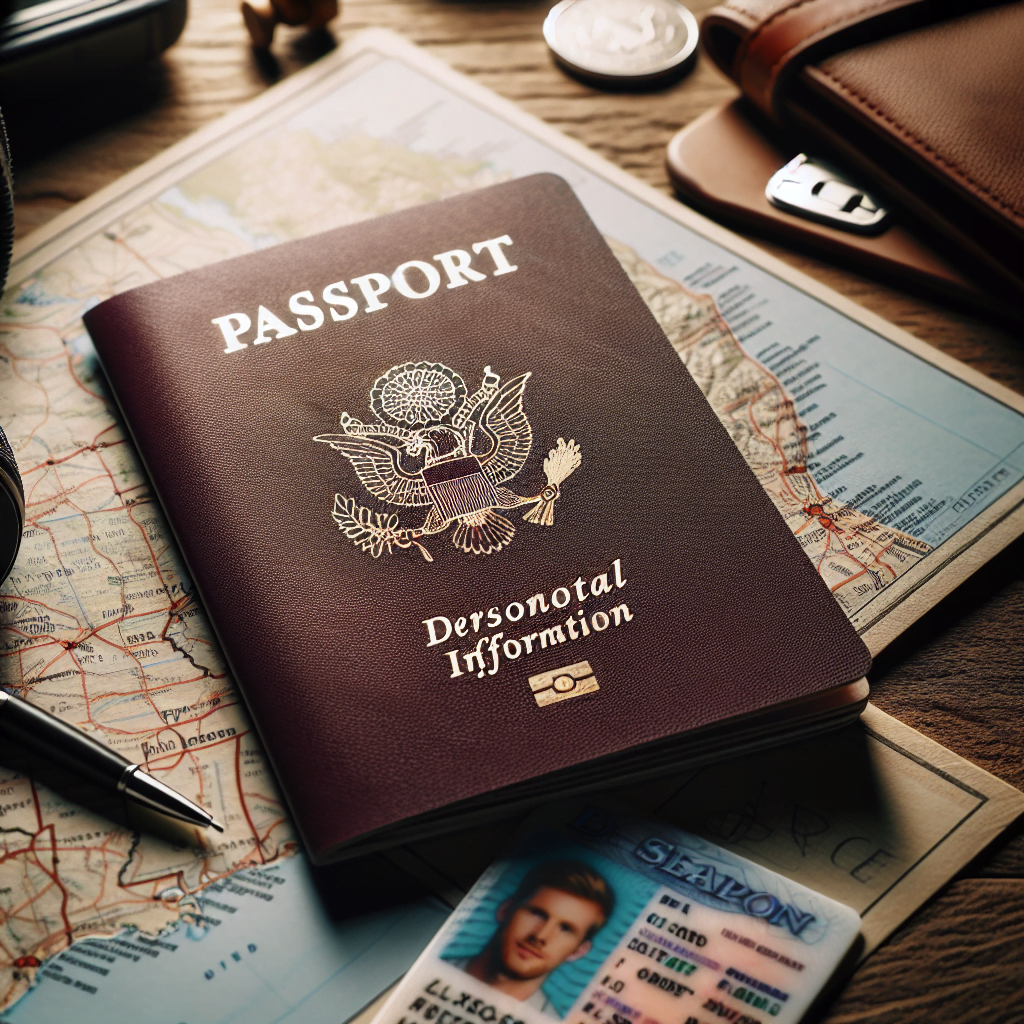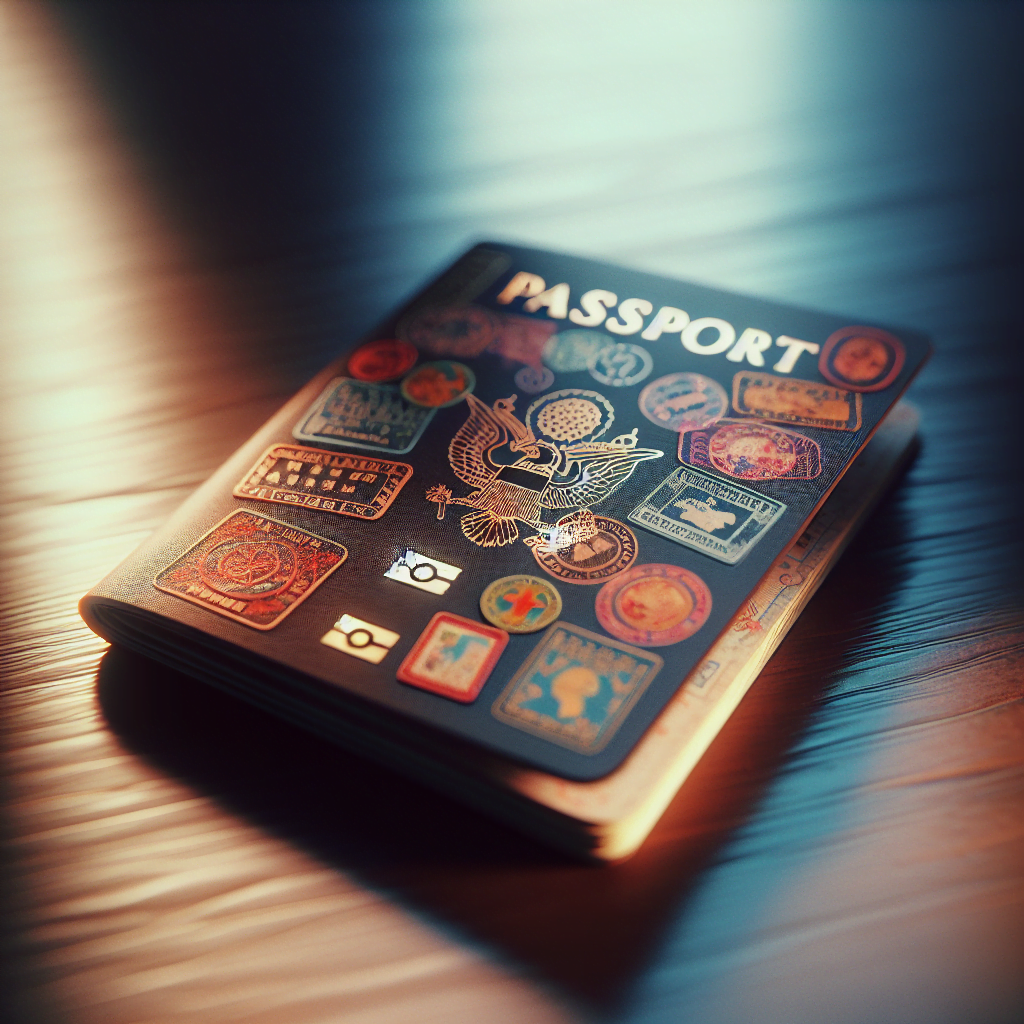If you’re planning a trip abroad and you’re wondering if you can use your driver’s license to drive in another country, you’re in the right place! Driving in a foreign country can be an exciting and convenient way to explore new destinations, but it’s important to make sure you have the proper documentation. In this article, we will answer the question “Can I use my driver’s license to drive abroad?” and provide you with all the information you need to know before hitting the road in a foreign land.
Table of Contents
Understanding International Driving Permits (IDPs)
What is an International Driving Permit?
An International Driving Permit (IDP) is an official document that translates your domestic driver’s license into multiple languages and serves as proof of your driving ability in foreign countries. It is not a stand-alone license and must be used alongside your valid national driver’s license. The IDP is recognized by many countries around the world and allows you to legally drive in these countries as a visitor or resident, depending on their specific regulations.
Which countries require an IDP?
While not all countries require an IDP, many do. It is important to check the specific requirements of the country you plan to visit or reside in before you drive there. Generally, countries that have different official languages than your domestic driver’s license or those that do not recognize your license will require an IDP. Some examples of countries that require an IDP include Japan, Brazil, Greece, and Thailand. It’s always best to consult with the embassy or consulate of the country you are planning to visit for the most up-to-date information.
How to obtain an International Driving Permit
Obtaining an International Driving Permit is a straightforward process. In most countries, you can obtain an IDP through your local automobile association or motor vehicle department. The requirements may vary depending on your country of residence, but generally, you will need to provide a completed application form, a photocopy of your domestic driver’s license, two passport-sized photographs, and the required fee. It’s important to note that IDPs are only valid for a specific period, typically one year, so make sure to check the expiration date before traveling.
What are the limitations of an IDP?
While an IDP allows you to drive legally in many foreign countries, it is essential to be aware of its limitations. Firstly, an IDP is not a substitute for your domestic driver’s license. You must always carry both documents with you when driving abroad. Secondly, an IDP is only valid in conjunction with a valid driver’s license from your home country. If your domestic driver’s license expires or is revoked, your IDP becomes invalid. Lastly, an IDP does not exempt you from complying with the local traffic laws and regulations of the country you are driving in. It is crucial to familiarize yourself with the specific driving rules and customs of each country you plan to visit or reside in.
Countries Accepting Domestic Driver’s Licenses
Countries that accept domestic driver’s licenses
Many countries around the world accept valid domestic driver’s licenses from foreign visitors or residents. These countries generally have agreements or arrangements in place that recognize the driving credentials issued by other nations. Examples of countries that accept domestic driver’s licenses include the United States, Canada, Australia, the United Kingdom, and most European Union member countries. However, it’s important to note that the duration of validity may vary, and some countries may require additional documents or verification.
Requirements and restrictions for using your driver’s license abroad
Although your domestic driver’s license may be accepted in certain countries, it is crucial to familiarize yourself with the requirements and restrictions of each destination. Some countries may require you to have an official translation of your license if it is not in their official language. Additionally, certain countries may have specific age restrictions for foreign drivers or require additional documentation such as an international insurance certificate. It is always recommended to research and understand the driving regulations and requirements of your destination before traveling.
Temporary visitor or resident status requirements
Keep in mind that the acceptance of your domestic driver’s license as a visitor or resident in a foreign country may depend on your temporary status. If you are a tourist or short-term visitor, your domestic driver’s license is often sufficient. However, if you plan to reside in a foreign country for an extended period, you may be required to obtain a local driver’s license. The specific requirements for obtaining a local license vary by country and can include written and practical exams, medical assessments, and proof of residency. It is essential to consult the local traffic authorities or your embassy for guidance on the requirements for obtaining a local driver’s license.

Specific Regulations and Exceptions
Countries that only accept IDPs
While many countries accept domestic driver’s licenses, some nations exclusively recognize International Driving Permits. These countries may not accept licenses in languages other than their official language or may require an additional IDP translation. Examples of countries that only accept IDPs include China, Russia, and Vietnam. If you plan to drive in one of these countries, it is essential to obtain an IDP before your trip to ensure compliance with their regulations.
Countries that have specific regulations regarding driver’s licenses
In addition to IDP requirements, some countries have specific regulations regarding the use of foreign driver’s licenses. For example, in Germany, if you hold a foreign driver’s license that is not issued by an EU or EFTA member state, you may need to pass a written and practical driving test to obtain a German license after residing in the country for six months. Similar requirements exist in countries like Canada and New Zealand. Researching and understanding these regulations can help you avoid any legal complications during your stay abroad.
Exceptions for certain countries or regions
It’s important to note that there may be exceptions for specific countries or regions within a country. For example, in the United States, each state can have different rules and regulations regarding driver’s licenses, and some states may require an IDP for foreign visitors. Additionally, regions like the United Kingdom may have separate regulations for licensing in Northern Ireland and Great Britain. To ensure accurate information, always consult the local traffic authorities or your embassy for the specific regulations of the area you plan to visit or reside in.
Driving in Foreign Countries as a Tourist
Major considerations for tourists driving abroad
Driving in a foreign country as a tourist can be an exciting and rewarding experience, but it requires careful planning and consideration. Before embarking on your journey, it is important to familiarize yourself with the local road rules, traffic signs, and driving customs. Each country may have its own unique regulations, such as driving on the opposite side of the road or different speed limits. Researching and understanding these differences beforehand will help you navigate foreign roads safely and confidently.
Road rules and driving customs in different countries
The road rules and driving customs can vary greatly from one country to another. For example, in some countries, it is customary to use your vehicle’s horn frequently as a way of signaling intentions or acknowledging other drivers. In others, yielding to pedestrians is an important part of the driving culture. It is crucial to educate yourself about these customs to ensure a smooth and enjoyable driving experience. Understanding the local road signs, signals, and markings is also essential for navigating unfamiliar roads safely.
Car rental requirements and guidelines
If you plan to rent a car while abroad, there are certain requirements and guidelines to keep in mind. Most car rental companies will require you to be of a minimum age, typically between 21 and 25 years old, and hold a valid driver’s license. Some rental agencies may also request an IDP, especially in countries that do not recognize the language of your domestic license. Additionally, it is important to thoroughly inspect the rental car for any pre-existing damages before leaving the rental agency. Familiarize yourself with the rental company’s policies, such as fuel requirements and insurance coverage, to avoid any unexpected issues.

Driving in Foreign Countries for Work or Study
Requirements for driving in foreign countries for work or study
If you plan to drive in a foreign country for work or study purposes, there may be additional requirements to fulfill. Some countries may require you to obtain a local driver’s license if you are residing in the country for an extended period. Depending on the duration of your stay, you may need to meet certain criteria, such as passing a written and practical driving test or providing documented proof of your residence. It is crucial to familiarize yourself with the specific requirements and regulations for driving as a foreign worker or student to ensure compliance with the local authorities.
Applying for a local driver’s license
If you are planning to work or study in a foreign country for a significant amount of time, it may be necessary to apply for a local driver’s license. The process for obtaining a local license varies by country but often requires completing an application, providing necessary documents, and passing written and practical exams. In some cases, you may need to attend driving lessons or receive training specific to the country’s driving conditions. Contacting the local traffic authorities or your employer/institution for guidance on the application process is highly recommended to ensure a smooth transition to driving in the foreign country.
Employer or educational institution policies on driving abroad
Before driving in a foreign country for work or study, it is important to consult your employer or educational institution for their policies and recommendations. Some employers or institutions may provide specific guidance or requirements for driving in the host country. They may also offer support in obtaining a local driver’s license or provide information on transportation alternatives. Understanding and adhering to these policies will not only ensure compliance but also contribute to a safe and positive experience while driving abroad.
International Driver’s License vs. International Driving Permit
Differences between an international driver’s license and an international driving permit
It is essential to understand the differences between an international driver’s license (IDL) and an international driving permit (IDP). While the terms are often used interchangeably, they refer to distinct documents. An IDL is a stand-alone driver’s license that is recognized in some countries without the need for an additional permit. It is issued by your home country and includes an officially translated version of your domestic license. On the other hand, an IDP serves as a translation of your domestic license and is used in conjunction with it. The IDP is recognized in more countries than an IDL, making it a valuable document for international travelers.
Where and how to get an international driver’s license
To obtain an international driver’s license, you will need to contact the appropriate authorities in your home country. In many cases, your local automobile association or motor vehicle department can assist you in obtaining an IDL. The requirements and application process may vary depending on your country of residence, but you will typically need to provide a completed application form, proof of identity, a valid domestic driver’s license, and the required fee. It is important to note that an IDL is only valid when used in conjunction with your domestic license and follows the expiration date of your domestic license.
Advantages and disadvantages of an international driver’s license
An international driver’s license has several advantages for travelers who plan to drive abroad. It allows you to legally drive in countries that recognize the license, even if they do not accept your domestic license. The IDL provides an officially translated version of your license, which can be helpful for communication purposes with local authorities and rental car agencies. However, it is important to note that an IDL may not be recognized in all countries. Additionally, certain countries may require an IDP in addition to an IDL. It is crucial to research and understand the specific requirements of each country before deciding whether to obtain an IDL or an IDP.

Tips and Resources for Driving Abroad
Researching driving regulations and requirements beforehand
Before driving in a foreign country, thorough research is essential. Familiarize yourself with the driving regulations, traffic laws, and road conditions of the country you plan to visit. Check if there are any specific requirements for foreign drivers, such as IDP or local license obligations. Additionally, educate yourself on any cultural norms or driving customs that may differ from your home country. Reliable resources can include official government websites, embassy or consulate information, and travel forums where fellow travelers share their experiences and tips.
Understanding local traffic signs and symbols
Understanding local traffic signs and symbols is crucial for safe and efficient navigation on foreign roads. The meanings of signs may vary from country to country, so it’s important to familiarize yourself with the specific signage system used in your destination. Many countries use internationally standardized signs, but there may be variations or unique symbols to be aware of. An online search or a guidebook focusing on road signs and symbols can provide valuable information to help you interpret and respond appropriately to the signage you come across.
Using navigation tools and apps for foreign roads
To navigate unfamiliar roads, consider using navigation tools and apps designed for international travel. These tools can provide turn-by-turn directions, real-time traffic updates, and points of interest along your route. Popular navigation apps include Google Maps, Waze, and Apple Maps, which offer extensive coverage in various countries. Some apps also provide offline maps and translation functions, which can be valuable when driving in areas with limited internet connectivity or language barriers. Utilizing these resources can enhance your driving experience and help you reach your destinations efficiently and safely.
Potential Consequences of Driving Without Proper Documents
Legal implications of driving without a valid license
Driving without a valid license, whether domestic or international, can have severe legal implications. In most countries, it is considered a traffic violation or an offense that can result in fines, penalties, and even legal consequences. If you are caught driving without the proper documents, you may face fines, vehicle impoundment, or legal action, which can significantly impact your travel experience. It is crucial to ensure that you have the correct documents, such as a valid domestic driver’s license and an IDP when necessary, to comply with the local laws and regulations.
Insurance coverage issues when driving unlawfully
Driving without the proper documents can also create issues with insurance coverage. In the event of an accident or incident, insurance companies may deny claims if the driver is found to have been driving unlawfully. This can be financially burdensome and leave you personally responsible for any damages or injuries. It is vital to verify the requirements of your insurance policy and confirm that you have the necessary documentation to drive legally. If you are unsure, contacting your insurance provider before traveling can help clarify any concerns and ensure that you have adequate coverage.
Steps to take if you encounter difficulties abroad
If you find yourself driving without the proper documents or encounter difficulties abroad, it is important to take immediate action. Firstly, remain calm and cooperative if confronted by local authorities. Follow their instructions and do not attempt to bribe or evade the situation. If possible, contact your embassy or consulate for guidance and support. They can provide assistance in navigating the local legal system or communicating with local authorities. Remember to keep copies of important documents, such as your passport and driver’s license, in a secure location separate from the originals in case of loss or theft.

Safety Precautions and Cultural Sensitivity for International Drivers
Ensuring personal safety while driving abroad
When driving in a foreign country, prioritizing personal safety is paramount. Familiarize yourself with the local road conditions, traffic patterns, and accident statistics to be prepared for potential risks. Adhere to the speed limits, wear seat belts, and follow all traffic rules and regulations. It is also important to remain vigilant and be cautious of your surroundings, especially in unfamiliar areas or at night. Avoid driving under the influence of alcohol or drugs, and have a designated driver or use alternative transportation if necessary. By prioritizing safety, you can enjoy a secure and memorable driving experience abroad.
Adapting to different driving cultures and norms
Every country has its own driving culture and norms, and it is essential to adapt to these when driving abroad. Pay attention to how local drivers behave on the road, respect their driving customs, and try to blend in with the traffic flow. For example, in some countries, honking is more common as a way of signaling intentions, while in others, it may be seen as impolite. Observing and emulating the behavior of local drivers can help you navigate complex traffic situations and avoid misunderstandings or conflicts. Being a considerate and patient driver will not only contribute to your safety but also foster positive interactions with the local community.
Respecting local traffic rules and road etiquette
Respecting local traffic rules and road etiquette is crucial when driving abroad. Observe and follow the local speed limits, traffic signs, and signals to ensure your own safety and that of others on the road. Yield to pedestrians at designated crossings and be patient and courteous towards other drivers. Avoid aggressive driving behaviors such as tailgating or excessive horn use, as they can be seen as disrespectful in some countries. Demonstrating respect for the local traffic rules and road etiquette will contribute to a smooth and harmonious driving experience, allowing you to fully embrace the culture of the country you are visiting or residing in.
Conclusion
Driving abroad can be a thrilling and convenient way to explore new destinations, but it is essential to understand the requirements and regulations for driving in foreign countries. By obtaining an International Driving Permit or ensuring your domestic driver’s license is accepted, you can navigate the roads legally and confidently. Familiarizing yourself with the specific driving rules, road signs, and driving customs of the countries you plan to visit will ensure a safe and enjoyable experience. Whether you are driving as a tourist, for work, or for study, being prepared, respectful, and mindful of local regulations will help you make the most of your driving adventure abroad. Remember that safety should always be your top priority, and staying informed about the local traffic laws and cultural sensitivities will contribute to a memorable and fulfilling travel experience.

